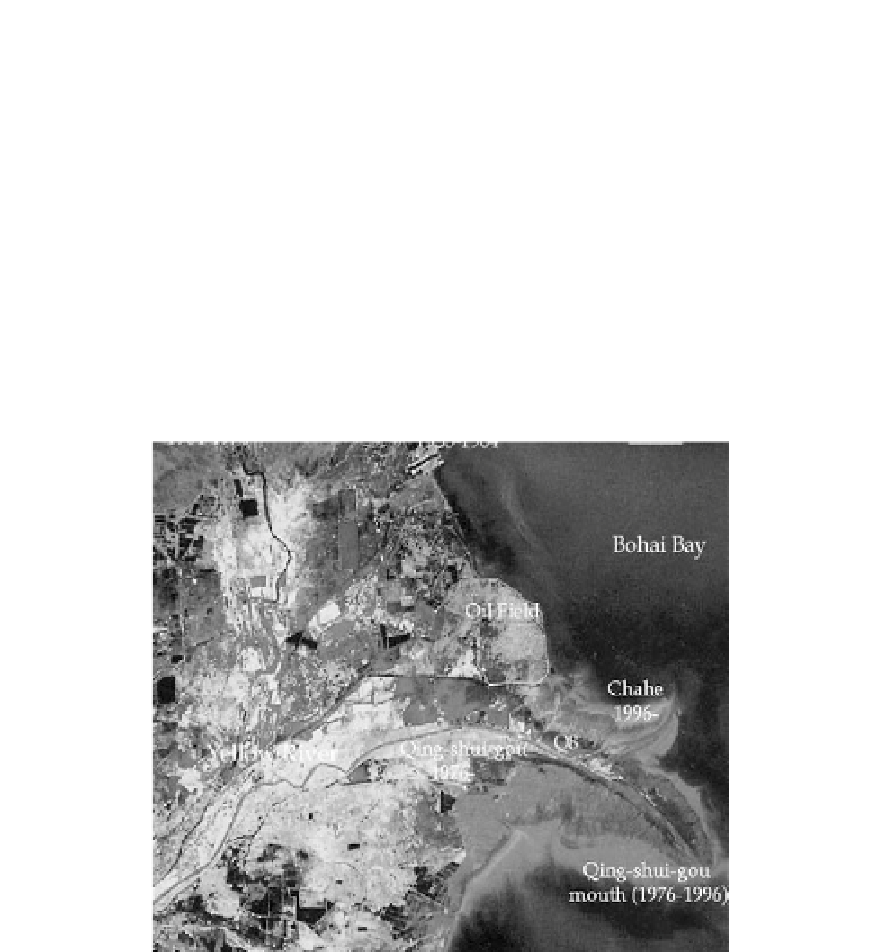Environmental Engineering Reference
In-Depth Information
channel. Because the new channel was 16 km shorter than the previous one, the energy slope was higher
and retrogressive erosion occurred in a section of 30 km from the river mouth. The shift to the new
channel reduced the flood stage upstream to Lijin by more than 0.3 m. The peak discharge of the flood at
Lijin was 4, 100 m
3
/s. The flow was kept in the main channel and no overbank flow occurred. Therefore,
the 25, 000 ha of farmland and 4 oil fields on the floodplain were free from flood. More than 60 km
2
land
were created at the new river mouth by the 1996 flood. According to the predicted sediment load and
runoff, more than 200 km
2
of land could be created by the Yellow River sediment around the new river
mouth in several years. The offshore oil field there would emerge. This was a successful operation
integrating river mouth training and oil production. Fig. 6.38 is a satellite image in 2000, 5 years after the
shift to the Qing-shui-gou-Chahe channel. The rate of land creation is less than the estimation because the
sediment load and water to the river mouth in the past years were much less than the long term average.
However, the new channel is stabilized quite soon. The original Qing-shui-gou channel bed is now
covered with vegetation of shrubs and herbaceous.
Fig. 6.38
Satellite image of the modern Yellow River delta and the Qing-shui-gou-Chahe channel in 2000 (See color
figure at the end of this topic)
6.5
Lessons From Sanmenxia Reservoir
Sanmenxia Reservoir demonstrates the perils of giving inadequate consideration to sediment man-
agement in the planning and design of a reservoir. Because the problems of siltation and induced
flooding risk to the lower Weihe river have not been solved, decommissioning of the Sanmenxia dam has
been under discussion for a long time as an alternative strategy to eventually solve the problem. The
flooding disaster that occurred on the Weihe River in the fall of 2003 has rekindled the argument on
decommissioning of the dam. The main cause for the disastrous high stage is the continuously increasing
river bed and flood plain due to sedimentation. If there were no Sanmenxia Dam, the river bed would be
much lower and the flood would cause no such disasters. Nevertheless, only 3 years ago when the Yellow
River Conservancy Commission celebrated the 40 year anniversary of the Sanmenxia Reservoir, many

Search WWH ::

Custom Search